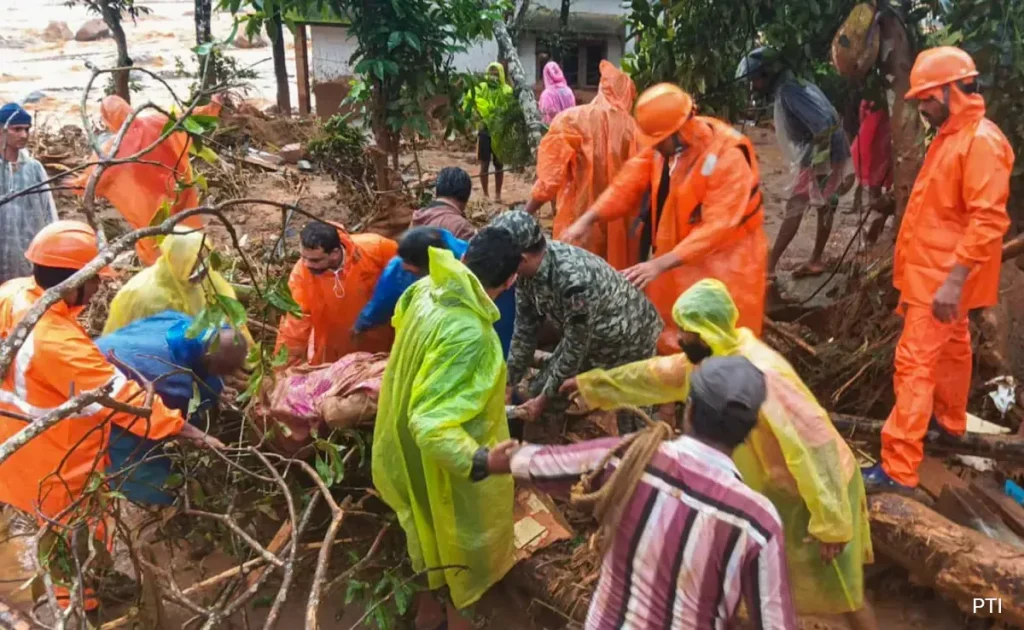Landslides triggered by torrential rains have resulted in a devastating disaster in Kerala’s Wayanad district, killing over 140 people and injuring dozens more. The catastrophic event struck the hilly areas near Meppadi on Tuesday morning (July 30), causing widespread destruction and loss of life.

Multiple Landslides and Loss of Lives
The landslides were reported in the Mundakkai and Chooralmala villages under the Meppadi Panchayat. As rescue operations commenced, multiple bodies were recovered from the Chaliyar River in Malappuram’s Nilambur region, with many others feared to have been washed away. The Indian Express reported that the disaster’s impact has been profound, leaving families shattered and communities in mourning.
Rescue Efforts Hampered and Reinforcements Deployed
The rescue efforts faced significant challenges when the main bridge leading to Mundakkai village collapsed, obstructing access to the affected areas. The Indian Army and Navy, alongside the National Disaster Response Force (NDRF), were swiftly deployed to assist in the rescue operations. However, the difficult terrain and continuous rains have made these efforts arduous.

The Indian Army has detailed its plans for relief and rescue operations in the landslide-hit district. Six columns of the Indian Army, in conjunction with the NDRF and district civil administration, are executing the rescue missions. A temporary bridge construction on the Meppadi-Chooralmala Road will commence once earth-moving equipment, airlifted from the other side of the road, arrives. The Indian Air Force’s C-17 Globemaster, a large military transport aircraft loaded with bridging materials, has already departed from the Hindon airbase in Ghaziabad, Uttar Pradesh.
Vulnerability of Kerala to Landslides
A recent AI-aided study highlighted that approximately 13 percent of Kerala is extremely prone to landslides, with Idukki, Palakkad, Malappuram, Pathanamthitta, and Wayanad identified as highly vulnerable regions. The study, conducted by the Kerala University of Fisheries and Ocean Sciences (KUFOS), revealed a 3.46 percent increase in extreme landslide susceptibility zones in the state following the extreme rainfall event of 2018, reported The New Indian Express (TNIE).

In 2011, the Western Ghats Ecology Experts Panel (WGEEP), chaired by ecologist Madhav Gadgil, classified most of the Idukki and Wayanad districts as category 1 eco-sensitive zones, indicating high vulnerability. The panel recommended that forest land in these areas should not be used for agriculture or non-forest activities. However, two years later, the Kasturirangan report softened these recommendations, leading to ongoing debates about land use and conservation in these regions.
Ongoing Rescue and Relief Operations
An advance group from the army’s Madras Engineers Group (MEG) is already conducting reconnaissance on the Meppadi-Chooralmala Road to determine the bridge resources needed in the affected areas. They have established a control centre to coordinate the Indian Army’s Humanitarian Assistance and Disaster Relief (HADR) efforts, supported by the Commandant of the DSC Centre.

The willpower and unanimity of the Keralites during this crisis have been commendable. Despite the massive challenges, the coordinated efforts of various forces and the resilient spirit of the local population continue to drive the rescue and relief operations forward.
